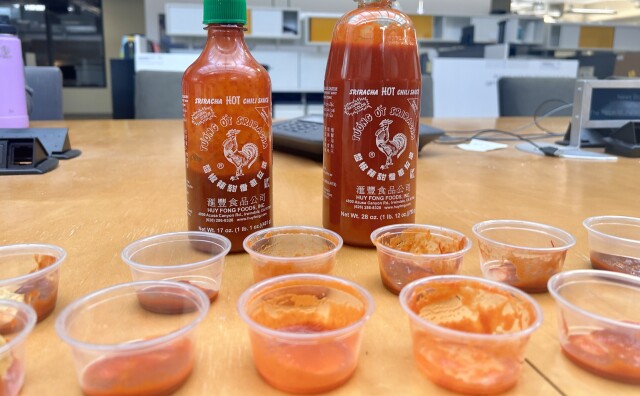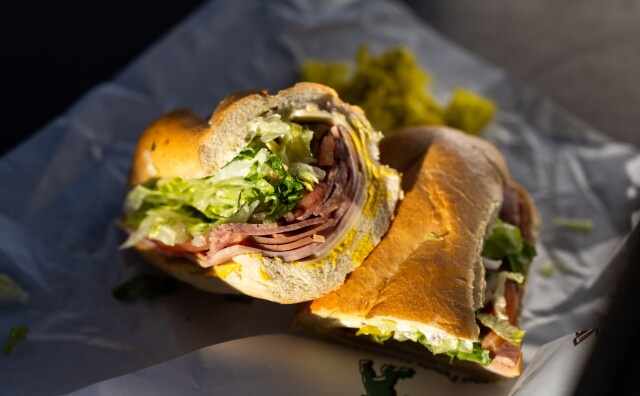How Pijja Palace Could Change Indian Food in LA

“We don’t have the Indian dining scene that New York and San Francisco have, so I’m just going to build it myself.”
These are the words from a year-old pinned tweet by Avish Naran, the creator of Pijja Palace, a Silver Lake spot that calls itself a sports bar and serves the best Indian American food you will find in Los Angeles.
Not everyone wants to hear that the Indian dining scene in L.A. isn’t great as it stands; fewer still want to hear that message compared to other cities. Los Angeles is Los Angeles, and most Angelenos will be quick to remind you that it’s not trying to be any other city than itself.
But for a city known for fostering ethnic enclaves and supporting communities who serve in restaurants the same ingredients and flavor profiles they’d eat at home, Indian food remains a sore spot for many.

There is no Indian equivalent of Guelaguetza, Jitlada, or Cheong Won Buffet, for example, and there are few spots you’ll find in L.A. where you’ll be able to eat the quality of Indian food you’d be able to find in the Bay, New York, or New Jersey.
-
At magnitude 7.2, buildings collapsed
-
Now spinning in front of Santa Monica apartments
-
Advocates seek end to new LAUSD location policy
Fewer spots still showcase Indian food in regional specificity or even with an Indian audience in mind. You’re more likely to eat at restaurants featuring the same spice blend with the same tomato and cream base, adding in paneer, chicken, or veggies.
While there are many wonderful Indian food spots with even more wonderful folks working to keep them running in L.A. — Namaste Spiceland in Woodland Hills, Mayura in Palms, and Imli in Whittier, to name a few —in a city with stupidly good food, we’re still far from having the thriving Indian food scene that Angelenos deserve.
But as someone who loves this city with my whole heart, who has shaped her entire career around loving Indian American culture and food, and who believes that the Indian food scene has the potential to be so much more than it currently is, the opening of Pijja Palace gives me hope.
The dishes on their menu are unlike anything I’ve tasted in L.A. Chopped salad with a chaat vinaigrette. Okra fries. Dosa onion rings. Malai rigatoni and green chutney pijja. (The last dish also comes with a house cheese and spice blend featuring fenugreek leaves, parmesan, chili flakes, and oregano.)

The pijja, both the dish and the restaurant itself, come from an Indianized pronunciation of pizza, where the z’s soften into j’s. And the pizza itself is delicious — a crispy, thin crust, with flavorful sauces that showcase a range of Indian spices, and enough cheese to put a full jar of Lactaid to work.
“The name was just supposed to be like a meme or like a jokey concept. I've never really been overly serious,” Naran said. “I put palace in the name also as just a troll move. There are so many like Delhi Palace, Taj Palace. [...] I'm a pretty jokey dude, so I wanted to keep it pretty fun, you know?”
For cocktails, you can try the pata-quiri, made with rooh Afza, or chai whiskey sour for something on the sweeter side, or the jaggery old fashioned (Naran’s personal favorite) for something more balanced and citrus-forward. Expect future iterations of the jaggery old fashioned to be fat-washed in ghee.

With pizza and pasta being two of the food program’s main highlights, it’s easy to confuse the restaurant as Indian Italian food. But rather than representing any sort of fusion, the menu is distinctly Indian American — emblematic of Naran’s own history and relationship with food.
“It's weird, you know. You're in the middle of a bunch of things. The restaurant is just accurately how I was raised,” Naran said.
"I'm pretty far removed from India. My experience of cooking is just taking all the data that I've gained from growing up as an Indian American in Los Angeles."

Naran himself doesn’t hold close emotional ties with India, and hasn’t necessarily set out to create a world that represents all of India in Pijja Palace.
"I cook from a place of what I've learned from at home, what I've learned from outside, from culinary school. I just try to think of things as a human being,” he said.
The restaurant isn’t a love letter to the culture, whether the culture be Indian, Indian American, or L.A., and it isn’t trying to be. “I don't know if you were hoping for Anthony Bourdain or whatever,” he told me.
I wasn’t, for the record. As someone who loves being Indian American, who loves pizza and Indian food, and who wants an L.A. food scene that celebrates both, I’m just happy that Pijja Palace is here. But it’s clear that not all Indian Americans feel the same way.
A one-star review by Jaya L. on Pijja Palace’s Yelp page reads: “If you are desi or if you like Indian food, DO NOT COME HERE. The food was completely lacking in flavor, aromatics, and authenticity.”
Calling the food “extremely bland and unpleasant,” and “tasteless and whitewashed,” the reviewer adds “although its supposed to be a fusion restaurant, the Indian spices and ingredients are not highlighted or embraced at all.”
I'm pretty far removed from India. My experience of cooking is just taking all the data that I've gained from growing up as an Indian American in Los Angeles...
It speaks to a pattern Pijja Palace is seeing, in which some Indian Americans take offense at the restaurant’s food, name and more. Not all negative attention is worth acknowledging of course, but it clearly highlights the tension between Indians and Indian Americans — or even tensions that exist between Indian Americans and Indian Americans — who are concerned about who Pijja Palace is by and who it is for, how we’re being represented and in front of whom.
It’s a valid concern for Indian Americans: wanting to be represented fairly, or at the very least not wanting to be misrepresented or disrespected in a country that doesn’t always allow for that. But it’s clear that Naran is trying to create a space for himself and his loved ones to eat what they want to eat, watch what they want to watch, and listen to what they want to listen to. He’s not pandering to white audiences, nor Indian ones. He’s just creating a space that is true to him.

On Instagram, Naran laid out his point of view. "I have the unique perspective of owning a restaurant that other people feel they must define. Here is the trick. Don’t."
From the food and drink menus, to the R&B playing as guests dine (I caught a Bryson Tiller song playing during my first visit), to the playful art in the bathrooms celebrating both Indian and American athletes, Naran is cooking and creating for himself — a notion not rare among creators in the restaurant world, but certainly something that feels more rare in the Indian food scene in L.A.
I have the unique perspective of owning a restaurant that other people feel they must define. Here is the trick. Don’t.
“This is a sports bar in the parking lot of a Comfort Inn that I made for me, my friends and my family. We cook versions of the foods I liked eating, growing up as an Indian kid in Los Angeles. If you get down with us, all are welcome at this palace. If you feel like I don’t check the boxes of your personal ‘fusion’ rubric or whatever that even is, the option of staying home exists.”

Naran has created the sort of space he’d like to frequent himself, but hasn’t been able to find in L.A. From the spices in the dishes to the sodas on the drink menu to the postcard that comes with every bill, Pijja Palace is less self-indulgent than it is deeply personal, earnest, and intimate. It’s an artist and creator sharing his work simply because it’s what gives him joy.
“I don't really look at other restaurants to see what they're doing anymore. My creative process is something just completely unique to me,” Naran said. And on the Indian food scene in L.A., he promises: "I hope it gets better. If it doesn't, I'm gonna do it."
-
After people began complaining online that Sriracha they'd bought recently didn't taste like the old stuff, we set out to find the answer. It didn't go well.
-
From tortas to tuna melts, all sandwiches tell a unique story as they celebrate Los Angeles' diverse tapestry of flavors with each bite.
-
The company behind Sriracha told us production has resumed.
-
Dustin Bartz has figured out a way to sell a $6 smashburger — and still make a tidy profit. He enjoys trolling competitors who charge more.
-
Two amateur bakers take on a beloved, almost sacrosanct school treasure.
-
For Jeff Alulis, the Burger Quest became “something bigger” than him.









